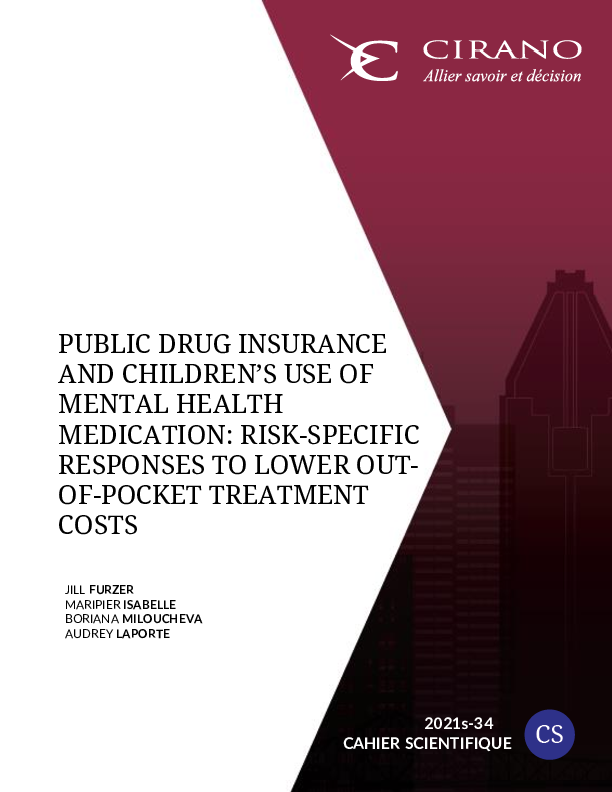Public drug insurance and children’s use of mental health medication: Risk-specific responses to lower out-of-pocket treatment costs
While the long-term consequences of unmet child mental health needs are well-documented, out-of-pocket costs remain an important barrier to accessing medication in childhood and adolescence. This paper exploits the implementation of a public drug insurance program in Québec, Canada, to estimate the impact of out-of-pocket costs on uptake of pharmaceutical treatment for mental health issues in children. To investigate the potential for low-benefit consumption or moral hazard due to lowered drugs costs, we combine a difference-in-differences estimation framework with novel machine learning techniques to predict the likelihood of diagnosis for ADHD, anxiety or depression across childhood in a nationally representative longitudinal sample of children. Our results suggest that eliminating out-of-pocket costs led to a 3-percentage point increase in treatment uptake and adherence. When adjusting for predicted risk, the effects are concentrated among the top two deciles of risk. For children in the bottom half of the risk distribution, treatment use changes were not statistically different from zero. We find that treatment uptake is driven by changes in stimulants, which are generally prescribed for ADHD. Our results suggest that reductions in out-of-pocket costs could help achieve better uptake of mental health treatment, without leading to low-benefit care among lower-risk individuals.




